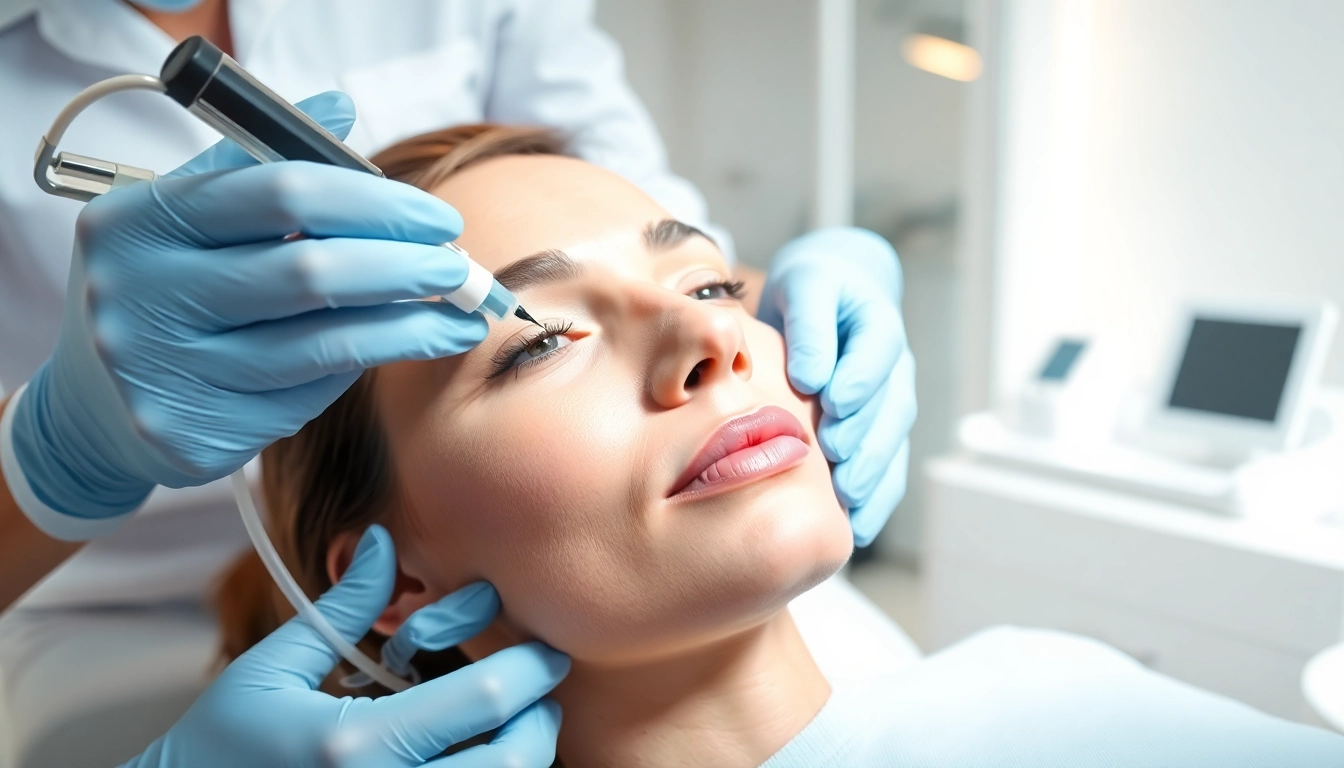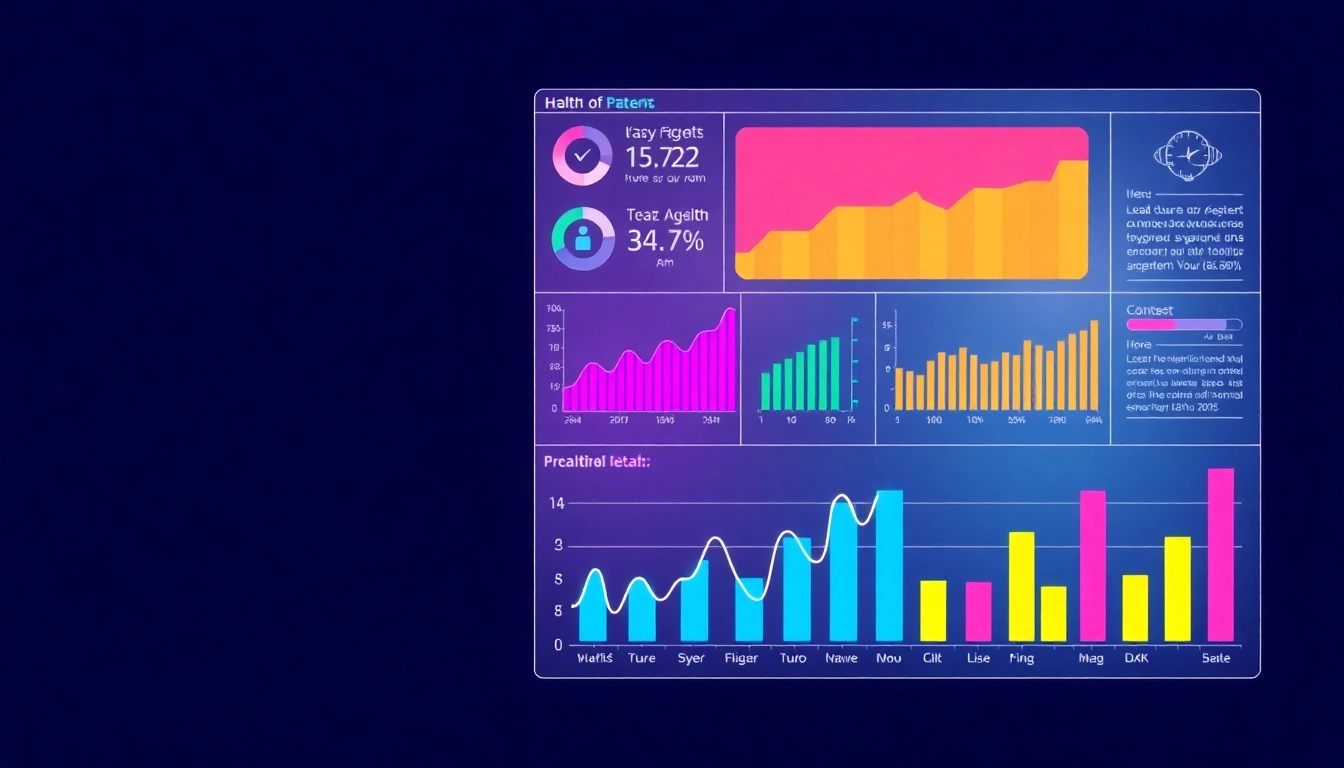Understanding Bioidentical Hormone Therapy
Bioidentical hormone therapy has gained significant attention in recent years, particularly among individuals experiencing hormonal imbalances associated with conditions like menopause and andropause. This therapy employs hormones that are chemically identical to those naturally produced by the human body, aiming to alleviate symptoms and improve overall health. As an increasing number of patients seek solutions for hormonal imbalance, understanding bioidentical hormone therapy’s intricacies is imperative. For those interested in exploring this innovative approach, numerous resources are available, including personalized treatment plans that can be discussed with qualified healthcare providers. Comprehensive insights into Bioidentical hormone therapy reveal how these treatments can foster enhanced well-being.
Definition and Overview
Bioidentical hormone therapy refers to the use of hormones that are molecularly identical to those produced by the human body. These hormones are synthesized from plant-based sources and include well-known hormones such as estrogen, progesterone, and testosterone. Unlike synthetic hormones, which may have modified structures that can lead to different biological actions, bioidentical hormones are designed to interact with the body in precisely the same manner as its natural hormones. This fundamental resemblance allows for a more tailored therapeutic approach, potentially mitigating symptoms associated with hormonal deficiencies or imbalances.
How Bioidentical Hormones are Made
The process of creating bioidentical hormones involves extracting plant sources, predominantly soy and yams, which contain phytohormones. These natural compounds are then chemically processed to match the hormone structures found within the human body. The final product can vary in strength and formulation, enabling healthcare providers to prescribe individualized doses that reflect the unique needs of patients. Compounding pharmacies often take the lead in this production, crafting personalized hormone formulas that comply with patients’ specifications and adhering to strict regulations to ensure safety and efficacy.
Differences Between Bioidentical and Traditional Hormones
When comparing bioidentical hormones to traditional hormone therapies, several key distinctions emerge. Traditional hormone therapies might use synthetic hormones or those extracted from animal sources, which may not align perfectly with human physiology. As a result, they can produce different side effects or reactions in patients. Conversely, bioidentical hormones are intended to mimic the body’s hormones precisely, providing advantages such as fewer side effects and a more effective absorption profile. Patients often report better symptom relief with bioidentical treatments due to this compatibility, despite ongoing debates and varying opinions within the medical community.
Benefits of Bioidentical Hormone Therapy
Common Health Improvements
For many individuals, the primary advantages of bioidentical hormone therapy include significant health improvements. Patients may experience an increase in energy levels, enhanced mood stability, improved sleep quality, and a restoration of libido. Additionally, various studies have indicated that hormone optimization can lead to better bone density, reduced risk of heart disease, and overall metabolic health improvement. Regularly monitoring symptomatic changes allows healthcare providers to make swift adjustments, tailoring therapy to ongoing patient needs.
Impact on Quality of Life
The transformative effects of bioidentical hormone therapy often extend beyond physical health into enhancing quality of life. Individuals undergoing this therapy frequently report heightened emotional well-being, increased vitality, and improved social interactions. With symptoms like anxiety, fatigue, and mood swings alleviated, patients find themselves more engaged and present in their daily activities. This positive impact can be transformative not only for the patients but also for their relationships and professional lives, fostering a rejuvenated sense of purpose and connection.
Doctor Testimonials and Patient Experiences
Healthcare professionals specializing in hormone therapy have noted significant success stories among their patients. Testimonials recount experiences of reclaiming life through symptom relief and improved health markers. Doctors often emphasize the importance of individualized treatment plans, aligning dosage and frequency of administration with the patient’s unique physiological responses. These case studies serve as powerful motivation for those contemplating therapy, illustrating real-life benefits and reinforcing the therapy’s credibility as a legitimate health management strategy.
Potential Risks and Side Effects
Understanding Hormone Imbalance Risks
According to medical professionals, while bioidentical hormone therapy holds promise for alleviating symptoms of hormonal imbalance, it is not without risks. Mismanagement of hormone levels can lead to adverse outcomes such as anxiety, mood swings, weight fluctuations, and other hormonal side effects. Thorough evaluations, including comprehensive blood tests, can help in accurately determining a patient’s hormonal levels, thereby preventing complications associated with either under-treatment or over-treatment.
Common Side Effects of Therapy
As with any medical treatment, individuals considering bioidentical hormone therapy should be aware of potential side effects. Commonly reported experiences include headaches, breast tenderness, bloating, and breakthrough bleeding. Most side effects are mild and often transient; however, if they persist or deepen, it is crucial to communicate these changes to a healthcare provider. Regular follow-ups and reassessments can help mitigate risks and ensure that the therapy remains aligned with individual health goals.
Which Patients Should Avoid Treatment?
While bioidentical hormone therapy can provide relief for many, certain individuals may be advised against using this treatment. Patients with active hormone-sensitive cancers, such as certain types of breast, ovarian, or prostate cancer, should approach hormone therapies with caution. Additionally, those with unresolved blood clotting disorders or cardiovascular diseases may face heightened risks. Consulting with a knowledgeable healthcare provider can facilitate informed decision-making based on individual health histories and conditions.
Who Can Benefit from Bioidentical Hormone Therapy?
Candidates for Treatment
Bioidentical hormone therapy can benefit a diverse demographic, particularly those experiencing symptoms due to hormonal decline or imbalance. Age-related changes such as menopause for women and andropause for men often prompt consideration of hormone therapy. Patients reporting symptoms of fatigue, mood swings, sleep disruptions, and decreased libido may find this therapy especially useful. Early identification of candidates can facilitate timely interventions, optimally addressing issues before they escalate.
Age Considerations and Timing
Age plays a crucial role in timing the initiation of bioidentical hormone therapy. Generally, individuals in their late 30s to early 50s may start experiencing hormonal fluctuations, making them prime candidates for intervention. However, younger individuals with chronic hormonal issues or conditions such as polycystic ovary syndrome (PCOS) may find therapeutic options beneficial as well. Balancing the benefits against the long-term implications of hormone use is essential; thus, proactive discussions with healthcare providers are recommended.
Conditions Treated by Therapy
A variety of conditions can be treated through bioidentical hormone therapy. Common applications include alleviating women’s symptoms during perimenopause and menopause, like hot flashes, night sweats, and mood changes. For men, symptoms of low testosterone—such as decreased energy, mood disturbances, and loss of muscle mass—can also be addressed. Beyond these, therapeutic applications may extend into other hormone-related dysfunctions such as adrenal fatigue or thyroid issues, showcasing the therapy’s versatility.
Steps to Starting Bioidentical Hormone Therapy
Initial Consultations and Evaluations
Initiating bioidentical hormone therapy begins with an initial consultation with a healthcare provider who specializes in hormonal treatments. This consultation typically involves a thorough health history review and a comprehensive physical examination. Patients may undergo specific laboratory tests to gauge their hormonal levels. The more detailed the initial evaluations, the more effective the subsequent treatment plan can be tailored. An accurate understanding of hormonal status is pivotal in designing a regimen that caters to every patient’s unique requirements.
Creating a Personalized Treatment Plan
Following initial assessments, the next step is crafting a personalized treatment plan. This plan considers patients’ specific hormone levels, symptoms, lifestyle factors, and health goals. Adjustments can be made regarding the types of hormones prescribed, their delivery methods (such as injections, patches, or pellets), and dosages. Continuous collaboration between the patient and healthcare provider guarantees that the treatment remains effective and aligned with the patient’s evolution over time.
Monitoring Progress and Adjustments
Once treatment commences, ongoing monitoring becomes essential to ensure the therapy is functioning optimally. Regular follow-up appointments allow healthcare providers to assess progress, monitor side effects, and make any necessary dosage adjustments. These evaluations not only ensure safety but also empower patients to actively participate in their health management, guiding them to make informed decisions about their hormonal health. The adaptability of bioidentical hormone therapy is one of its most significant advantages, allowing for ongoing refinement tailored to each individual’s journey.



